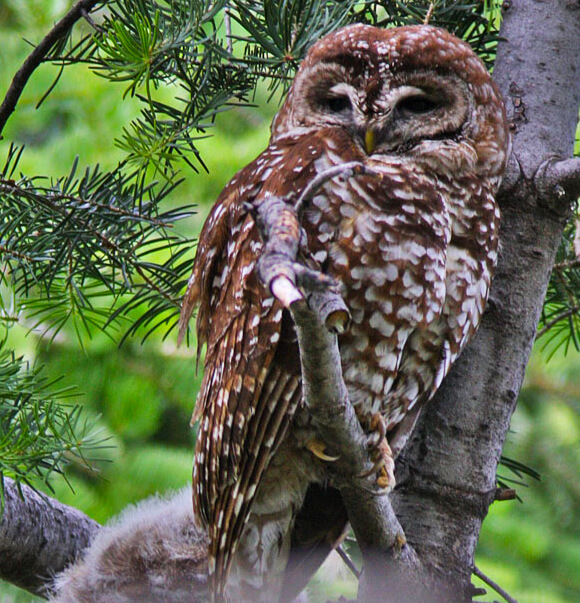Proposed Plan for a Forest in Washington State Weakens Protections for Northern Spotted Owl; Sets Bad Precedent for Northwest Forest Management
MEDIA RELEASE
Contact: Robert Johns, 202-234-7181 ext.210,
 |
| Northern Spotted Owl by Glen Tepke |
(Washington, D.C.,
“This is a step in the wrong direction that will put the rapidly declining Spotted Owl population at even greater risk of extinction,” said Steve Holmer, senior policy advisor for American Bird Conservancy. “This proposal sets a bad precedent and is not an encouraging sign of what is to come next from the Forest Service under the new Spotted Owl Recovery Plan.”
Perhaps the most notable change in the proposed forest plan was the switch from a reserve system of areas off-limits to logging to protect owl habitat, to a reserve-less strategy. This idea was proposed in the draft owl recovery plan but spawned strong opposition from scientific societies and conservation groups. While the proposed strategy for Okanogan-Wenatchee indicates that a percentage of the forest will be managed for the owl’s benefit, there is concern this protection is not guaranteed as it was under the current reserve system.
"The Spotted Owl Recovery Plan calls for additional habitat protection, but this proposed plan moves in the opposite direction and would eliminate the system of reserves designated to conserve the species,” said Holmer.
The management standards proposed for portions of the former habitat reserves could be potentially harmful to the Northern Spotted Owl. The proposed plan would allow for significantly greater road densities (more than 15%) in at least six owl reserves. Greater road densities typically result in increased logging.
“Allowing greater fragmentation and road densities would reduce the amount of suitable owl habitat in those areas, not to mention increasing fire risks, and should not be allowed,” said Holmer.
The population of the Northern Spotted Owl, listed under the Endangered Species Act in 1990, is now thought to number fewer than 4,000 pairs, and is declining at a rate of 2.9% per year.
Public comments on the proposal are due today. American Bird Conservancy’s comment letter is available at: https://abcbirds.org/pdfs/wen_plan_rev.pdf


















































